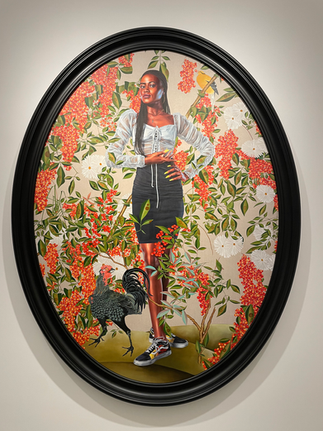The Elephant in the Room, Kehinde Wiley
- Sol Aponte
- Feb 7, 2023
- 2 min read
We can not talk about Black Art legends and not address the elephant in the room…Kehinde Wiley. Kehinde Wiley is an American artist who is best known for his striking and powerful paintings that explore the intersection of race, gender, and power. Born in Los Angeles in 1977, Wiley has built a reputation as one of the most important artists of his generation, and his work has been exhibited in museums and galleries around the world.
Wiley's paintings are notable for their large scale and dramatic poses, which often draw from classical European paintings and sculptures. However, instead of depicting white European subjects, as was common in classical art, Wiley replaces these figures with black people, making a powerful statement about the representation of people of color in the art world.
One of the hallmarks of Wiley's work is his use of vibrant, striking colors, which add an extra layer of intensity to his paintings. He also often includes elements of traditional African dress and adornment, which serve to highlight the cultural heritage of his subjects.
In addition to his paintings, Wiley is also known for his public art installations, which have been featured in cities around the world. These installations often take the form of large-scale bronze sculptures, which depict black subjects in a similar style to his paintings. By placing these sculptures in public spaces, Wiley is making a powerful statement about the presence of black people in society and their importance in the cultural landscape.
Wiley's impact on the art world has been profound. He has been praised for his ability to challenge traditional notions of beauty and to bring a new perspective to the way we see and think about people of color. Through his work, Wiley has inspired a generation of young artists and has helped to expand the boundaries of what is considered "art" and who can be considered an artist.
Kehinde’s legacy is one of challenge and transformation. He has broken down barriers in the art world and has helped to change the way we see and think about race, gender, and power. His work will continue to inspire and influence future generations of artists and art lovers alike.










Comments